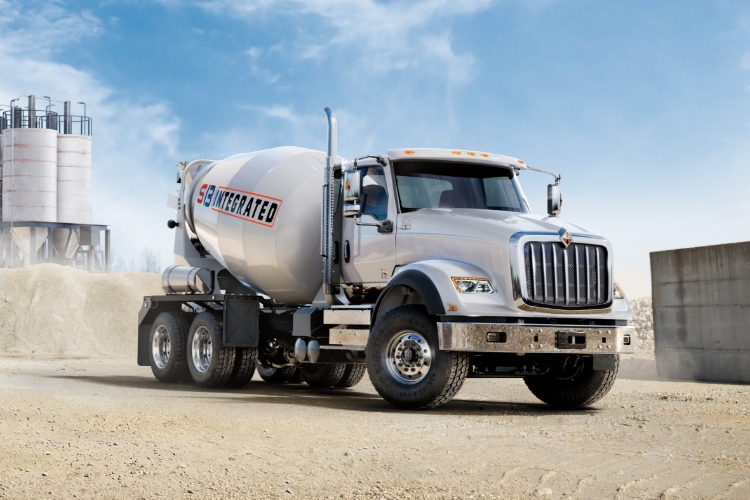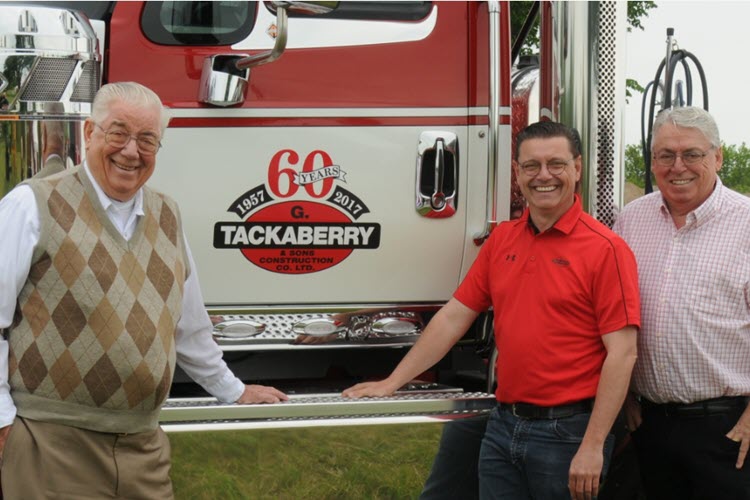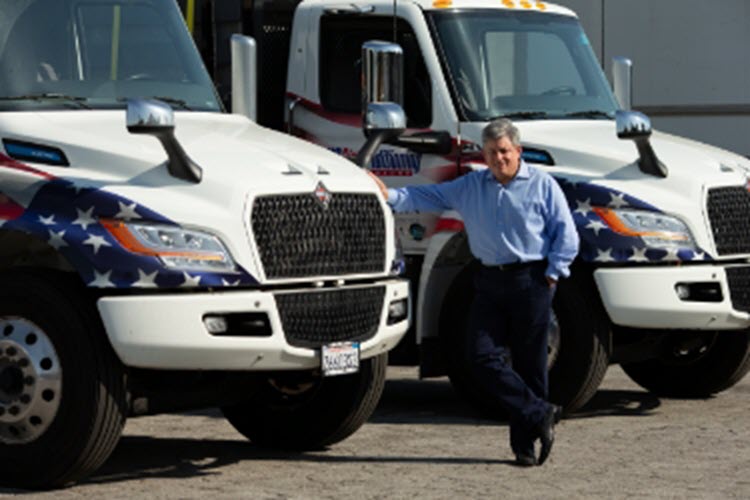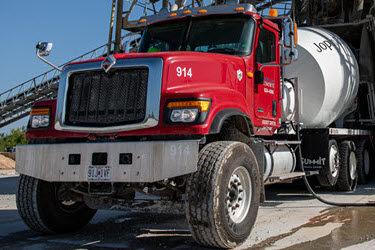DuraStar Miller Pipeline
In the race to replace America’s aging infrastructure, every second counts. Below our feet, thousands of miles of aging pipeline—some dating as far back as the early 1900s—carry natural gas and water to and from homes and businesses. If one of these channels were to rupture, the best-case scenario is a major inconvenience. At worst, a gas leak could trigger a deadly disaster.
That’s where contractors like Indianapolis-based Miller Pipeline come in. Utility companies rely on Miller to upgrade the country’s complex network of service lines as quickly and safely as possible.
“Our customers are very aware that they need to get their older piping replaced before there’s any sort of incident,” says Pat Conley, Miller’s purchasing manager.
For Miller, the work is constant, requiring a fleet of 500-plus medium-duty trucks—most of which are DuraStar® vehicles—to deliver employees and equipment to jobs in communities with nearly every type of terrain imaginable.
Miller has been in this business since the 1950s. For decades, the family-run company remained proudly small, dispatching a handful of construction teams throughout Indiana and Ohio. Over the past five years, however, Miller’s growth has been “astronomical,” says Conley. Currently, more than 500 crews work from 24 locations across 26 states in the eastern half of the U.S. They expect to add 85 more crews by the end of the year.
Energy supply
Right now, on a bright but frigid winter day, one of those crews is hard at work in Zionsville, Ind., a suburban enclave north of Indianapolis. They’re about halfway through a two-week pipeline replacement project.
Near the tree-lined corner of South Ninth and Plum streets, the deep rumbling of a backhoe’s engine cuts the silence. The operator steadies the heavy machine and rams its arm into the ground, ripping a sizable chunk of asphalt from the earth. Later in the day, a similar pit will be dug 400 feet downhill. Finally, a directional drill will bore a tunnel between the two holes, and a brand-new line of yellow plastic piping will be inserted to provide the safe flow of natural gas for years to come.
“If we do our job right, the folks who live here won’t see us for another 50 years. And that’s a good thing,” says J.R. Boller, a regional shop coordinator at Miller, referring to the corrosion-free properties of the polyethylene pipes, the American Gas Association’s preferred material for new lines.
Parked a few feet away from the action is the DuraStar that makes the whole operation possible. Painted in Miller’s signature yellow and equipped with a 10-foot dump body, the compact vehicle resembles an overgrown Tonka truck. But this is no toy. If the powerful yet nimble workhorse were to break down, the ripple effects would be felt immediately.
“Uptime is extremely important to us,” says Greg Raver, Miller’s vice president of fleet operations. “If a truck is out of commission, that impacts an entire crew. They’re not able to meet their deadlines. We need to get the pipeline into the ground as quickly as possible, with as little impact to the neighborhood as possible.”
Medium-Duty Solution
Miller Pipeline’s recent growth spurt has triggered the need for dozens of new trucks. After assessing their options, the company chose the DuraStar powered by Cummins ISB6.7. The trucks, 55 of which have been in operation since last year, are configured to play multiple roles: Not only do they tow the massive backhoes that are essential to pipeline replacement and repair; they also operate as dump trucks, carrying asphalt and debris away from the job site to nearby landfills.
“It’s a unique application,” says Raver, who has managed fleets for the U.S. Defense Department in Afghanistan and the National Science Foundation in Antarctica. “The versatility of the DuraStar is perfect for us. Essentially, it functions as two vehicles in one.”
According to Raver, the company’s previous medium-duty vehicles weren’t up to the task of hauling their heavy equipment, which has gotten even heavier in recent years since Miller shifted to bigger, four-wheel- drive backhoes. But with the 200 to 325 horsepower Cummins ISB under the hood, his newest trucks have more than enough muscle for the job.
“The trucks pull the loads really well,” he notes. “It doesn’t matter whether it’s hilly terrain in the Southeast or the flatlands in the Midwest. The feedback that I’ve gotten from our drivers has been very positive in terms of comfort and how they handle different conditions. With the increased power and torque, our drivers are able to get from job site to job site quickly—and that adds to our bottom line.”
But it’s the reliability of the trucks that has been the real difference-maker. After nearly a year on the road, the DuraStar vehicles have had zero issues. A big contributor is the ease of maintenance that is inherent in the truck’s design. “Our mechanics really like the accessibility of the engine,” adds Raver, who is responsible for more than 6,000 pieces of equipment. “We’ve definitely had less mechanical issues and increased uptime. That means less work for our technicians and more time to focus on other types of maintenance.”
Proven Partnership
To get precisely the trucks they needed, Raver and his team worked closely alongside Rick Carmichael, Miller’s sales representative at Rush Trucks in Indianapolis. A 30-year trucking industry veteran, Carmichael knew that Miller required a powerful truck; but the vehicles also had to be nimble enough to safely maneuver 18,000 pounds of heavy equipment around residential neighborhoods.
“The DuraStar met that need,” Carmichael says. “It gave us the flexibility to deliver a truck with a 10-foot body that also had substantial towing ability.” And the Allison automatic transmission helps make the truck easy to operate, especially for the newer drivers among Miller’s fast-growing crews.
As Miller Pipeline continues to expand to meet the needs of its utility and municipal customers, the company also benefits from the industry-leading service and support of the International dealer network. “Miller Pipeline can take their truck’s to any of our dealerships and receive the same treatment that they get in Indianapolis,” Carmichael says of the many dealer locations. “We have a great partnership.”
Back on the job site, the new pipeline has been laid, and the DuraStar is ready to get back to work. Weighed down by a dump bed filled with four tons of detritus, it performs a tricky three-point turn and threads down a narrow residential road. Even a local resident walking his dog barely notices as the truck heads off with a full load.
“I think that the infrastructure work Miller Pipeline is doing is just as important as anything else that’s keeping our country going—it just happens behind the scenes,” says Carmichael. “It’s just as vital as the need to maintain our roads and bridges. Miller’s DuraStar trucks are at the forefront of making this country safer.”





